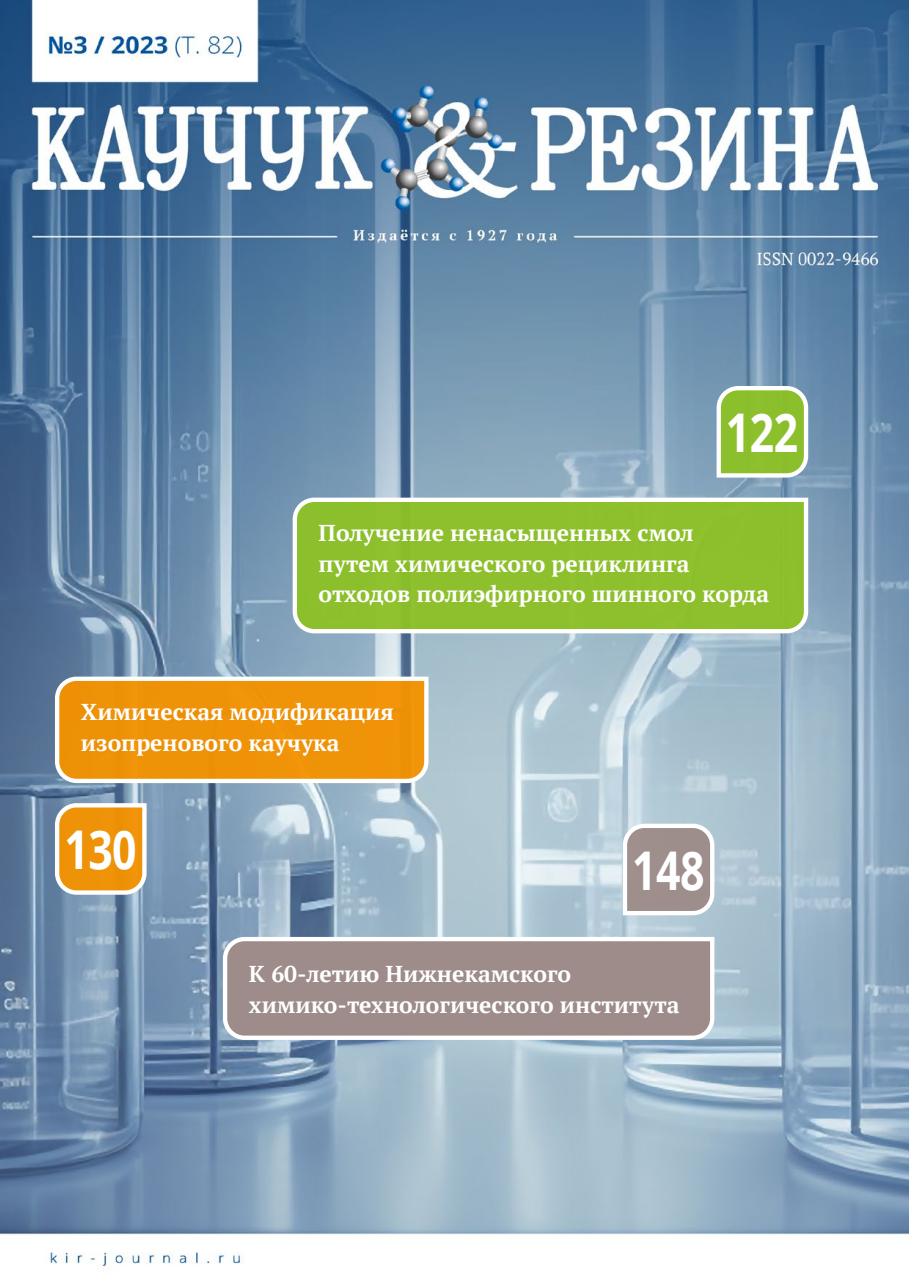Obtaining Unsaturated Resins by Chemical Recycling of Waste Polyester Tire Cord. Part 1
Published 2023-07-01
How to Cite
Abstract
The article is the continuation of the research devoted to the production of unsaturated polyester resins by waste tire cord chemical processing. The said waste consists of polyethylene terephthalate fibers and crumb rubber. The work is devoted to the study of the possibility of simultaneous occurrence of transesterification of polyethylene terephthalate and thermal devulcanization of rubber under the action of oligoesters with hydroxyl end groups, glycols and anhydrides The main research object is waste polyester cord extracted from used tires. Oligo(propylene glycol phthalate), diethylene glycol, and maleic anhydride were used as chemical agents. The granulometric composition of cord waste was studied by the sieve method. The composition of the cord fibers and the oligoester was confirmed using FT-IR spectroscopy. The molecular weight characteristics of the products were studied by gel permeation chromatography. The soluble fraction, the degree of devulcanization, and swelling characteristics were determined to study the course of devulcanization of rubber. It was found that the tested cord waste includes about 40 % (wt.) rubber crumb. The possibility of obtaining unsaturated polyester resin by chemical recycling of waste tire cord is shown. An unsaturated polyester resin with a number average molecular weight of 500 and a polydispersity index of 3,5 was obtained. It has been shown that the presence of rubber in the reaction mixture does not affect the course of interesterification. Chemical recycling conditions affect the devulcanization of rubber. The degree of devulcanization largely depends on the process temperature, and the soluble fraction depends on the flow time.

